The genesis of the song that would eventually become 'How Soon Is Now?' began at Earl's Court in London in June 1984 when Johnny Marr composed it along with 'William, It Was Really Nothing' and 'Please, Please, Please, Let Me Get What I Want' during a four-day period. Marr's initial demo of 'How Soon Is Now?' was originally called 'Swamp'. In contrast to the frequent chord changes he had employed in most Smiths songs, Marr wanted to explore building a song around a single chord (in this case, F♯) as much as possible.
Along with Andy Rourke and Mike Joyce, Marr recorded the song in July 1984 at London's Jam Studios. While producer John Porter was impressed by the basic riff that Marr played for him, he told Johnny that the song needed something else. Their discussion turned to the early recordings of Elvis Presley, which led to an impromptu jam session of the song 'That's All Right'. During the jam session, Marr began to develop his chord progression, which inspired the arrangement that is associated with the song.
Porter recorded the first takes of the song with microphones set up at varying distances from the band to better create a "swampy" mood (ironic when considering Marr's working title for the song at this time). Marr was able to keep the F♯ chord going for as long as 16 bars at a time. Despite only doing a few takes, they had filled an entire reel of tape, as one had gone on for an astonishing 15 minutes!
Marr and Porter then decided to add a tremolo effect to the guitar part, which proved critical to creating the distinct sound of 'How Soon Is Now'. Marr has said that he was inspired by Bo Diddley's distinctive syncopated shuffle guitar style (the rhythm of 'How Soon Is Now' has been compared to Diddley's 'Mona'), the song 'Disco Stomp' by Hamilton Bohannon, as well as the two guitars in the instrumental break of Can's 'I Want More'. To achieve the desired effect, Porter ran the original guitar track through the studio desk into three separate Fender Twin Reverb amplifiers, each with the tremolo control set to a different oscillation speed. Marr and Porter would adjust each by hand while the music played to keep it in rhythm; when they failed, engineer Mark Wallis would rewind the tape and start them again. Some of these segments were no longer than ten seconds.
To make sure the beat was the same throughout the song, Porter took a noise gate and set it to be triggered by a drum machine, using percussion instruments Joyce typically did not utilize set to 16th notes. This created what he called "a swirling signal" that balanced the analog tremolo effect and made sure the whole song stayed on the same beat. The guitar tracks were then "bounced" down to three of the master recording's 24 available tracks, and the 15-minute version was cut down to eight minutes. This was longer than any previous Smiths song had been. According to Porter, "we looked at each other and said, 'It sounds f***ing great; let's keep it like that."
After a break, Marr and Porter added a few overdubs, including a slide guitar part that "gave [the song] real tension", according to Marr. It was created using an early harmonizer that was also able to cache 1.2 seconds of delay, a very large amount for the time. Artists had been using it as a sampler; Porter says that he recorded the delay rather than the original to give it some "weirdness". While Porter has said that he played one of the slide guitars in the song, Marr disputes this. However, Marr gives Porter credit for his technical expertise that lent the sound and style of 'How Soon Is Now' its enduring gravitas.
Marr's other lead guitar part was the harmonic lick after each verse. This is almost a direct quote of a synthetic vibraphone part heard on rapper Lovebug Starski's "You've Gotta Believe" from 1983. Marr meant it as a direct response to some critics who had pigeonholed the Smiths as 1960s revivalists.
'That's All Right':
'Disco Stomp':
'I Want More' :
'Mona':
'You've Gotta Believe':
As soon as the recording session for the song was completed, Porter sent a rough mix of it to Morrissey, who promptly put together the lyrics by culling existing material from various works in progress in his notebook. Morrissey's opening lines - "I am the son, and the heir, of a shyness that is criminally vulgar / I am the son and heir, of nothing in particular" was adapted from a line in George Eliot's novel Middlemarch: "To be born the son of a Middlemarch manufacturer, and inevitable heir to nothing in particular". According to producer John Porter, in the studio Morrissey completed his vocals in an astonishing two takes.
Despite its prominent locus in the Smiths' repertoire, 'How Soon Is Now' is not generally considered to be representative of the band's general musical style. Indeed, when Rough Trade Records owner Geoff Travis first heard the song, he felt it was incongruent in comparison to the Smiths' overall "sound". Needless to say, Travis did not view the song as a suitable candidate for a single.
"Johnny's affectionate closeness to John Porter [producer] had finally clicked beyond price with 'How Soon Is Now?', and so dazed had I been that I ran from the studio with a final mix and jumped into a black cab, piling out at Collier Street, where I took the stairs five at a time and powered into Geoff's office. Geoff swivels in a large chair and I balance on a footstool as the song plays. 'How Soon Is Now?' struck me as a new landmark, but once the track had ended, Geoff broke the silence:
'WHAT is Johnny doing?' he said, 'THAT is just NOISE.'
The Collier Street clouds lowered, and 'How Soon Is Now?' resigned itself to B-side status."
-Morrissey, Autobiography
"I thought 'This is it!' ... but I don't think the record company liked it ... They totally threw it away, wasted it."1
-John Porter
Despite John Porter's recommendation to save the song for a later single release as an A-side, Rough Trade went ahead and released it as a B-side (along with 'Please, Please, Please, Let Me Get What I Want') on the 12-inch single release of 'William, It Was Really Nothing' in August 1984. Night-time British radio picked up on the song almost immediately, and by that autumn 'How Soon Is Now' had become the most-requested track on request shows hosted by several prominent DJ's throughout the UK.
'How Soon Is Now?' was included as a track on the compilation album Hatful of Hollow (released November 12, 1984)
,
as well as on US, Canadian, Australian, and Warner UK editions of the Meat Is Murder studio album (released February 1985).
Belatedly released as a single in the UK in early 1985, the song reached No. 24 on the UK Singles Chart. The UK single's cover art consists of a highly cropped still from the 1958 film Dunkirk, featuring British actor Sean Barrett, praying.
The song was released on Sire Records in the United States, backed with 'Girl Afraid', in November 1984. The cover art for the US single consisted of a photograph of the Smiths backstage at the 1984 Glastonbury Festival (this photo also appears on the gatefold inside the Hatful of Hollow compilation album). This alternate cover art was chosen as Sire Records deemed the original to be unsuitable. Specifically, that the subject appeared to be holding his crotch rather than holding his hands together in prayer. The US single is the only time a portrait of the band has appeared on the cover of one of their releases. Morrissey called it "an abhorrent sleeve – and [given] the time and the dedication that we put into the sleeves and artwork, it was tearful when we finally saw the record...".
Sire Records then added insult to injury, putting together a music video to promote the song without the authorization of, nor input from, any of the members of the band. The Smiths (and Morrissey in particular) were decidedly displeased by the videos' aesthetic and how it portrayed the band. Nonetheless, Sire Records' promotional video has been credited with helping make 'How Soon Is Now' the Smiths' most well known song in the United States.
‘How Soon Is Now’ promotional music video:
"We saw the video and we said to Sire, 'You can't possibly release this... this degrading video.' And they said, 'Well, maybe you shouldn't really be on our label.' It was quite disastrous".
- Morrissey, Creem Magazine, 1985
When 'How Soon Is Now?' was re-released in 1992 in the UK, it reached No. 16. The cover art on this reissue consists of a photo still of Vanessa Redgrave and David Hemmings from the 1966 film Blow-Up.
In 2007, Johnny Marr said 'How Soon Is Now?' is "possibly [the Smiths'] most enduring record. It's most people's favourite, I think."
The author was somewhat late to the game, having heard 'How Soon Is Now' for the very first time (indeed, having heard The Smiths for the very first time) when a friend loaned me a cassette of the Sire release of 'Meat Is Murder' in late December 1985. To this day I can vividly recall being profoundly mesmerized by the sound and style of the song, being so utterly different than any song heard before or even since. Coupled with Morrissey's emotive lyrics (again, so utterly different from anything I had heard on a song before), I was gobsmacked. Thus began an affinity for the music of The Smiths (and subsequently, the music of Morrissey) that has not only endured the test of time, but has grown and matured as evidenced by this Substack.
Johnny Rogan (1994). The Smiths: The Visual Documentary.




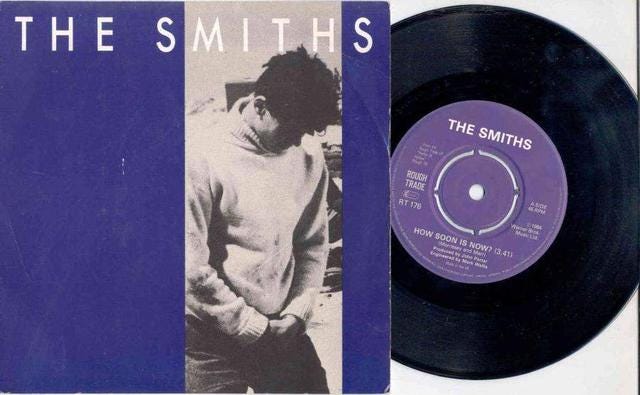
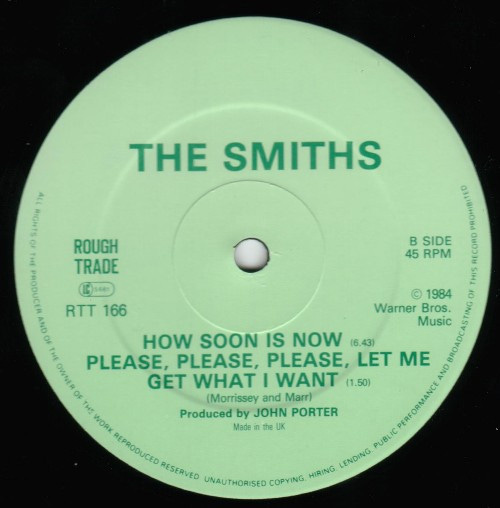
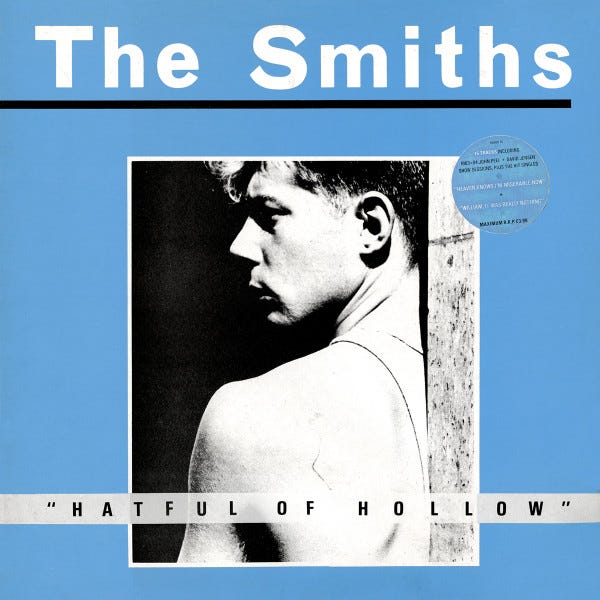
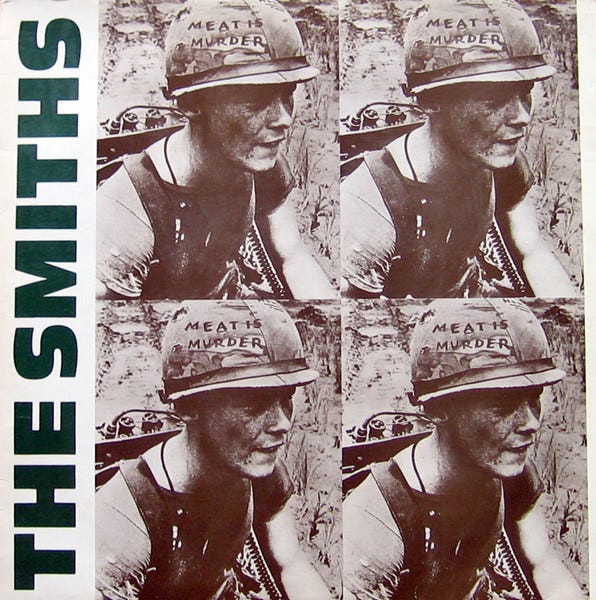
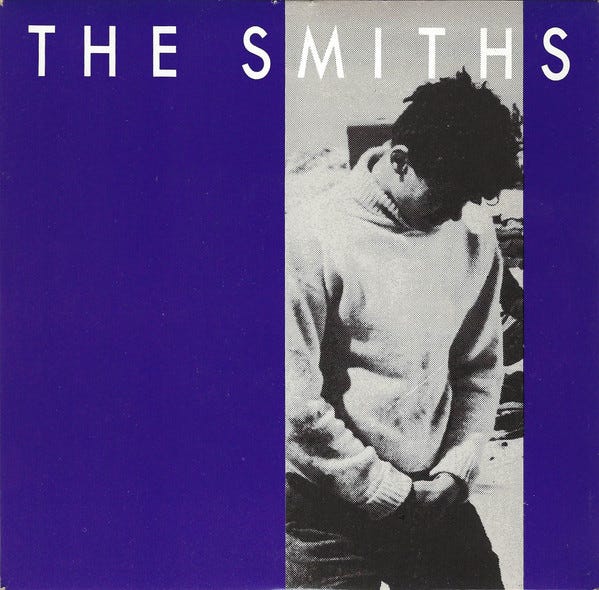
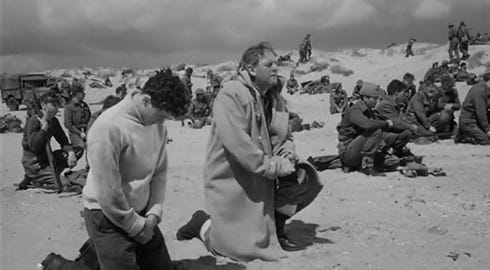
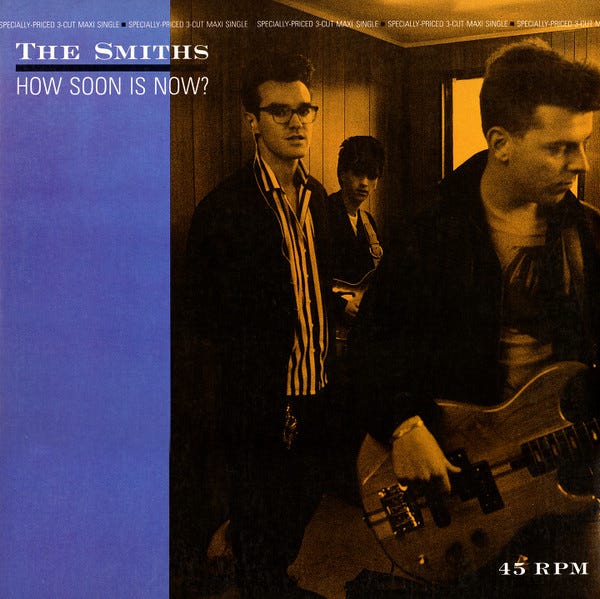
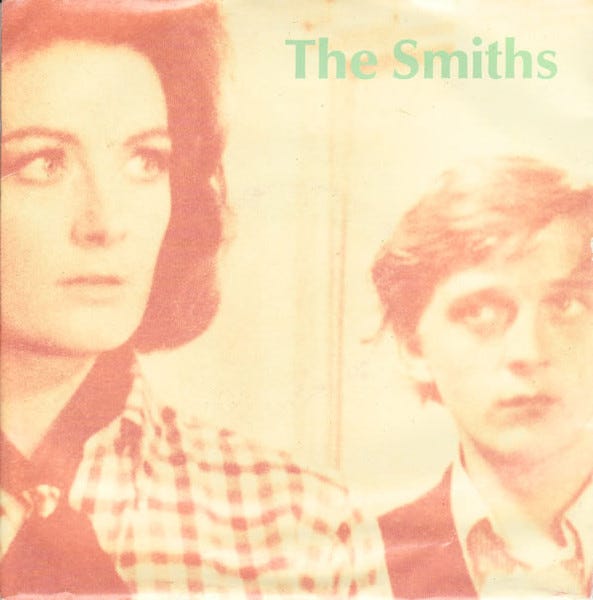
This is the song that got me hooked on The Smiths for life when I first heard it at the age of 16. I'm now nearly 52 and it remains my most favorite song ever!